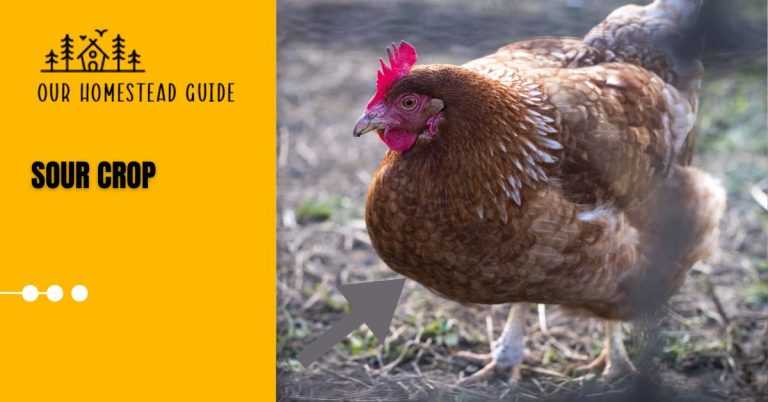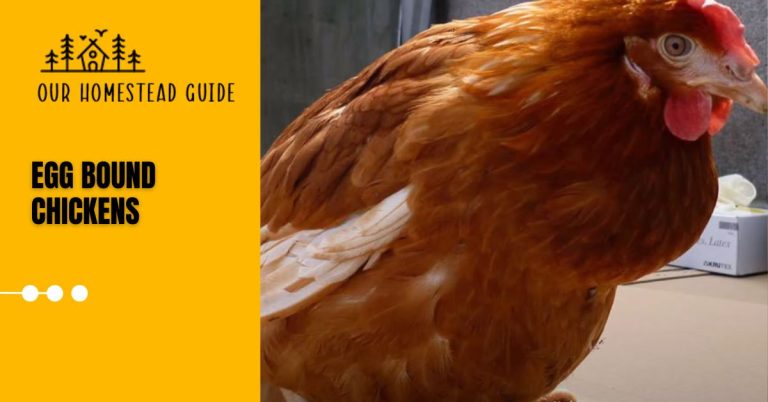Which Chicken Lays Purple Eggs? Complete Guide
Despite being a unique and beautiful sight, purple eggs are not inherently colored. Rather, they are the outcome of a late bloom application that occurred during the process of egg production.
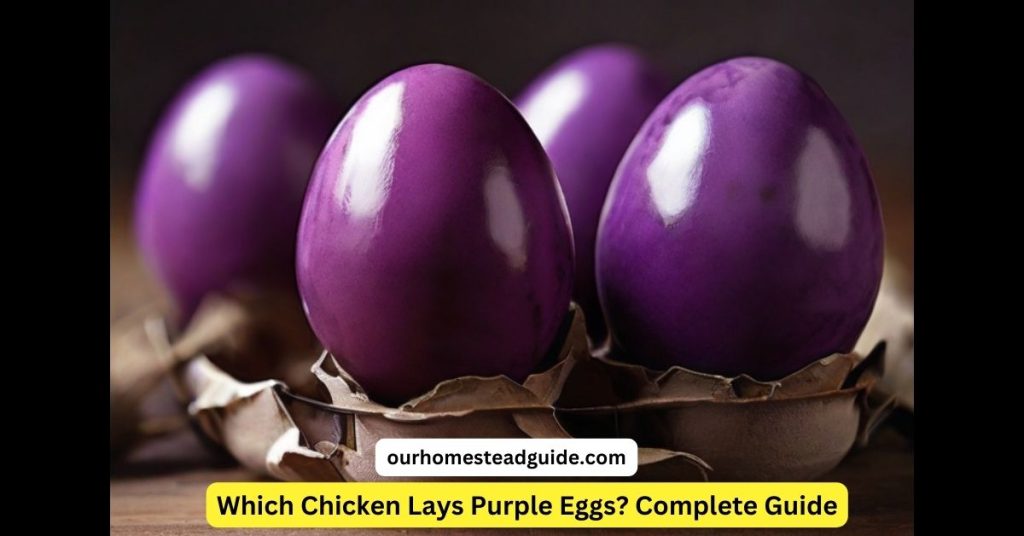
Depending on the particular pigments used, the hen’s protective layer, known as the bloom, can have hues ranging from deep violet to plum or lavender. Even if the color fades quickly, there is something magical and inquisitive about seeing a vivid purple egg tucked inside a coop full of straw.
Purple Eggs Overview

| Feature | Description |
|---|---|
| Color | Varies from lavender to deep violet |
| Cause | Late bloom application during egg formation |
| Natural Pigmentation | No |
| Rarity | Rare |
| Wonder and Curiosity | High |
| Nutritional Value | Similar to regular eggs |
| Safety | Safe to eat |
| Taste | No noticeable difference |
Is There a Way to Predict Egg Color?
There is; all you have to do is glance at the type of chicken in question. In general, hens of the same breed lay eggs that are all the same hue.
Examining the color of your hens’ earlobes is another trick, albeit it’s not always accurate because not all of them will have the same tint.
But in general, a chicken with red earlobes will lay brown eggs, while a white fowl will lay white eggs.
Silkies and hybrid chickens with mixed parentage are an exception to this rule. Sadly, silkies lay white eggs, despite having blue earlobes.
Genetics for egg color also originates from many parents. It’s not solely the hen or rooster’s decision. The genes from both parents often determine the color of the shell.
Egg color will mostly remain consistent within a breed. The only exception to this rule are hybrid breeds called Easter Eggers, in which hens in a flock can lay a variety of colorful eggs.
It’s important to note that each chicken can only lay one color egg.
Her genetic makeup determines this, thus her age, food, or any other element will not affect it.
Types of Chickens that Lay Colored Eggs
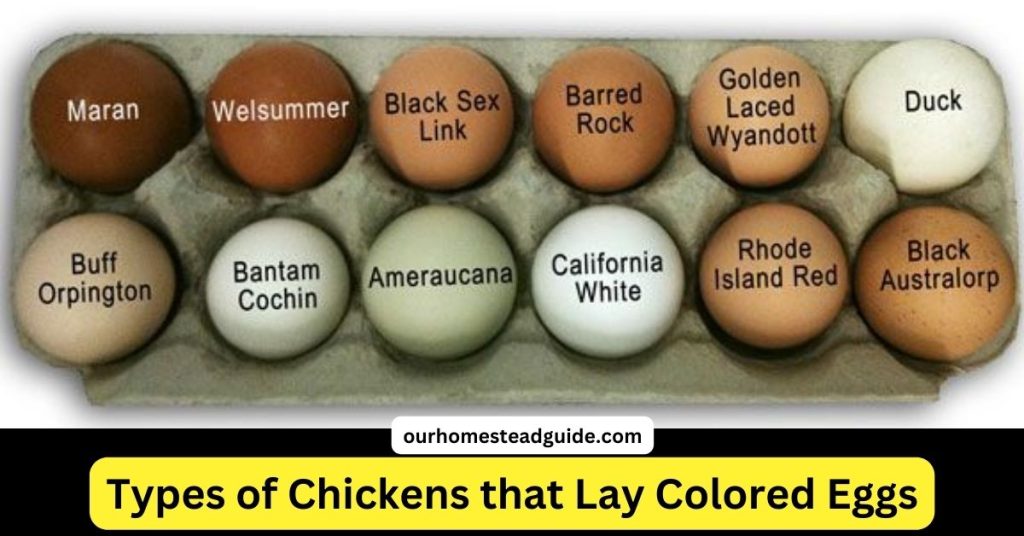
The following are some popular breeds of chickens that are known to produce colorful eggs:
1. Araucanas
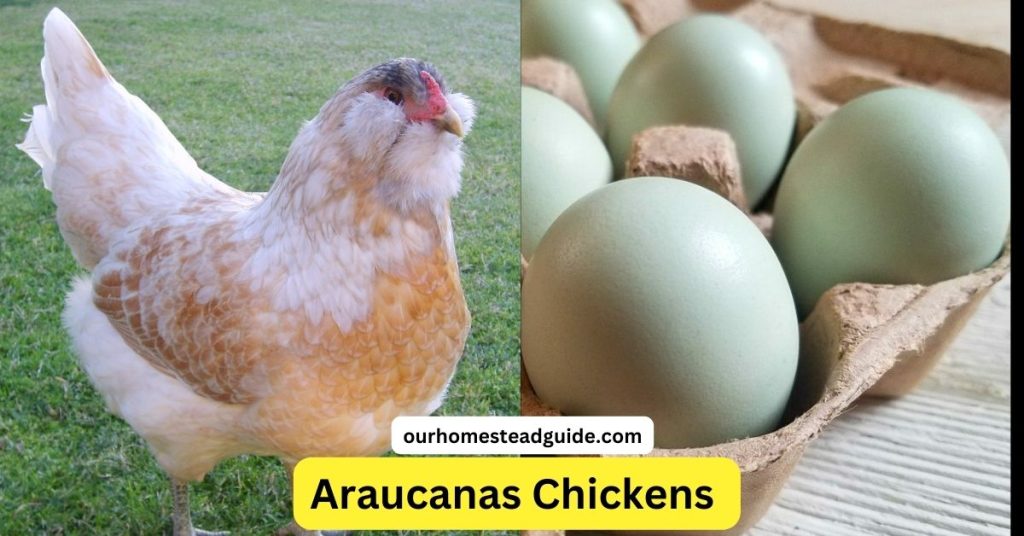
The Araucana chicken, so named because it is said to have originated in the Araucana area of Chile, is known for its beautiful blue eggs.
Not only are these hens valued for their eggs.
Their peduncles, which are feather tufts that cling closely to their ears, give them an intriguing appearance. Nor do they have conventional tails.
Araucanas are sometimes mistaken for Easter Eggers and Ameraucanas.
Even if these chickens have a similar appearance, you must select just Araucanas; otherwise, you’ll probably be unhappy with the outcome.
Every year, these birds may lay as many as 200 blue eggs.
It might be challenging to hatch Araucana chicks on your farm since they are a distinctive breed. This is due to the deadly genes found in Araucana chickens, which kill a significant percentage of chicks before they hatch.
You could be better off getting Araucana chicks from a hatchery if that’s what you’re looking for.
2. Ameraucanas
Despite the name seeming similar to Araucana, it’s crucial to distinguish the two!
Despite the breeds’ similarities, the Ameraucana is descended from the Araucana, having been crossed with another breed to get rid of the fatal trait that kills unhatched chicks.
Similar to Araucanas, Ameraucanas are distinctive in appearance, sporting tight muffs, tufts of feathers, and even a beard. They also produce blue eggs.
With a pea comb, this fluffy bird yields about 200 blue or even green eggs a year.
Cream Legbar
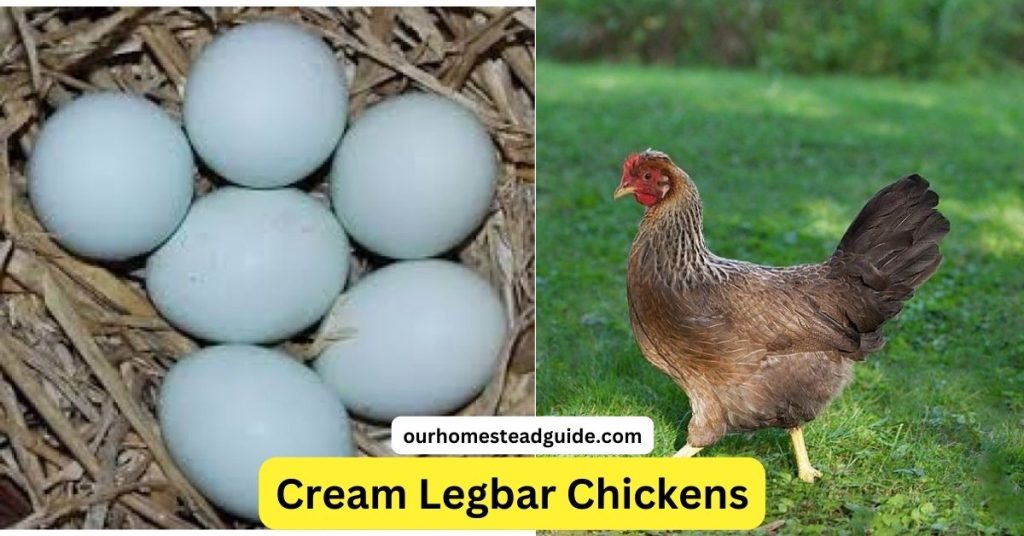
The Cream Legbar is a contemporary breed of chicken that originated in the late 1800s from a mix between Leghorns, Cambars, Barred Plymouth Rocks, and Araucanas.
There is another breed of chicken with cream-colored plumage that produces blue or blue-green eggs, and its genetic makeup does not include the deadly Araucana chick gene.
With this lovely breed, you may anticipate receiving up to 200 vibrant eggs annually.
Easter Eggers
You’ve probably heard of the Easter Egger if you’re searching for colorful chicken eggs.
When it comes to those looking for multicolored chicken eggs, this breed is among the most popular.
This type of chicken may lay up to 250 eggs annually. Most of the eggs that are laid by this breed of chicken are blue, but there are other colors as well.
Although a single chicken will only lay one color, you may create a flock of Easter eggers where every single bird lays a different color egg.
Therefore, you might be better off choosing one of these other breeds if you’re looking for a monochrome egg basket.
This is because Easter Eggers are hybrids, meaning that their genetic makeup isn’t usually standardized. They may be produced by crossing any blue or brown egg layer; as such, they aren’t a recognized breed in and of itself.
Green and pink eggs can also be laid by Easter eggers. Outcomes could differ!
Light Sussex
Beautiful Light Sussex chickens are frequently referred to as the classic backyard breed.
These birds are pleasant to be around, calm, and have good foraging skills. They are highly aware of their surroundings.
Up to 250 lovely pink eggs can be produced annually by Light Sussex birds.
Marans
Chefs consider Maran eggs to be among the best in the world. This breed, which has historically served two purposes, is mostly grown for its eggs.
Marans not only yield a respectable number of eggs, but their eggs also have a stunning chocolate brown hue.
But marans are different from other colorful egg producers in that each bird will lay eggs in a different tint.
Compared to an adult hen, a younger hen will lay darker eggs.
Welsummers
One of the smartest and most submissive breeds of chickens around is said to be the Welsummer.
These are endemic to Holland and lay eggs that have the color of chocolate brown.
They may lay up to 200 eggs a year and are excellent foragers due to their heritage breed status.
A Welsummer’s egg’s hue is very gorgeous because, in addition to being a rich chocolate brown, it may also include speckles. You will like the gorgeous speckled appearance that this provides the eggs.
Penedesencas
The Penedesenca chicken breed, a gorgeous warm-weather breed, originated in Catalonia, a province of Spain, in the early 1900s.
The Penedesenca is a little chicken with a big comb that produces brown eggs.
Penedesencas are renowned for being extremely wary and vigilant hens. Although they’re not the greatest hens to have as pets, they’re nonetheless entertaining to be around.
Dorking
Unique birds with humorous names, Dorking chickens produce some of the most exquisite cream-colored eggs.
With origins that can be traced back to the Roman Empire, these hens are among the oldest breeds.
They are also quite beautiful to look at since they are pleasant, lively birds. These hens have five toes on their small, squat legs.
Barnevelders
The Barnevleder is a stunning bird with double-laced feathering that can be buff and white, black and white, or blue and green tinted.
This chicken does have some auto-sexing variations; auto-sexing varieties include Silver, Blue, Partridge, Dark Brown, Barred, and Chamois kinds. It was added to the American Standard of Perfection in 1991.
And best of all, barneveleders are highly valued for their exquisite eggs. Their eggs are a deep chocolate brown color. It’s considered that the Welsummer breed of chickens is among the most intelligent and obedient ones available.
They lay eggs in the hue of chocolate brown and are native to Holland. Because of their historical breed classification, they are superb foragers and may lay up to 200 eggs annually.
The color of a Welsummer’s egg is particularly lovely because, in addition to being a deep chocolate brown, it might include speckles. You’ll adore the eggs’ stunning speckled look that this gives them.
Olive Eggers
The Olive Egger is another developer of hybrid eggs. As the breed is hybrid, this chicken’s yearly egg production may range from 200 to 300. Nevertheless, olive eggers typically lay green eggs.
The eggs from your Olive Eggers might be dark green or brownish-green in hue since they are a blend of blue and dark brown egg layers. Olive Eggers are often the result of a cross between Marans and Ameraucanas.
Asil
This ancient bird, also known as the Aseel, is extremely challenging to nurture yet yields eggs that are the color of cream. It was created for cockfighting in Pakistan and India and arrived in the United States in the 1800s.
The Asil is quite aggressive, which makes it hard to raise despite its beauty. In Additionally, you won’t receive many eggs—Asil hens typically only lay approximately 40 eggs a year—even though they will be a beautiful pink or cream color.
Barred Rock
A popular backyard breed, the Barred Rock chicken is raised for meat as well as for laying.
This chicken, which lays around 280 eggs a year, is well-known for producing pale pink eggs.
Yokohama
The Yokohama is a good option if you’re searching for creamy, milky eggs. Although this type of chicken can be hard to locate, it is prized for its striking tail feathers and cream-colored eggs. It was created in the 19th century in Germany through Japanese bird breeding.
Arkansas Blue
Here’s another unusual breed with blue eggs as its goal. Regretfully, as the Arkansas Blue is so new, it cannot be purchased just yet.
But keep an eye out for it when it goes on sale—this unusual chicken has a pea comb and produces gorgeously colored eggs.
Isbar
The Isobar, a Swedish chicken breed that first gained popularity in the middle of the 20th century, is pronounced “ice bar.” This kind of chicken, created by Martin Silverudd, is autosexing, meaning that when they hatch, you can identify them apart from hens.
Up to 200 green eggs can be laid by the Isbar annually. It’s an uncommon breed and might be challenging to locate, but the search is worthwhile, we assure you.
Ice Cream Bars
The Ice Cream Bar is a hybrid between the Isobar and the Cream Legbar, making it one of the newest breeds of chickens on our list with beautiful eggs.
It lays eggs that are colored a spectrum of pale bluish-green to deep teal. Similar to the Isbar and Cream Legbar, it might be a little challenging to locate.
Favaucana
The last breed of chicken on our list is a hybrid kind that is descended from Favorelle and Ameraucana parents; its eggs are sage green in color. These hens are highly valued due to their amiable and gregarious personalities.
Why Are My Eggs Purple?
Sadly, no breed of chicken exists that produces purple eggs. Your eggs may seem purple due to the bloom. The bloom serves as a barrier around the gg that keeps germs from penetrating the shell. Additionally, it keeps the eggs fresh.
After the egg is laid, you can notice a reddish tint on it, especially if your egg layers are brown. Generally, this may be cleaned off, but don’t do this if you intend to incubate or hatch the eggs! For the chick to be healthy, you need the bloom.
Do Eggs of Different Colors Taste Different?
The changes in flavor or texture should be negligible as long as the hens are given the same food and the eggs are produced by chickens and not by other animals.
Few individuals possessing an exceptionally refined palate are able to distinguish between eggs from various chicken breeds.
So, regardless of the color of the eggshell, it’s likely that you won’t detect a change in the flavor of the eggs.
How Are Chicken Egg Colors Produced?
As you presumably already know if you have laying hens, chickens aren’t born with the capacity to lay eggs. A chicken needs some time to develop to the point where it can lay eggs. But did you know that an egg may develop within the body of a chicken in as little as 26 hours?
That’s why rather than laying eggs every day, the majority of chicken breeds only do so a few times each week. An eggshell takes twenty hours to develop in total, and a further five hours are needed for coloring. White eggs are the beginning of all eggs. The coloring of eggs is caused by an internal dyeing process.
On the other hand, certain varieties of chicken have pigments that may tint their eggs green, brown, blue, or a range of other shades. The majority of eggs are solely colored on the outside. The ocean gene is responsible for the blue hue of chicken eggs. There is a retroviral mutation in this gene.
Can Eggs Change Color Over Time?
Generally speaking, eggs don’t change color over time. Having said that, the eggshell’s coloring may have somewhat decreased. It will therefore remain green or blue even if it may be a paler tint than it was before.
Egg color changes are typically linked to aging, stress, and poor nutrition. Your hen can develop an eggshell that is lighter than usual if she has been exposed to predator dangers or even just hot weather.
While there isn’t always much you can do to stop stress, you can lessen it by making sure your hen has access to a safe refuge, lots of nutrient-rich food, and fresh water.
Improving Egg Quality
As we’ve already discussed, wise breed selection is the only genuine strategy to affect the production of colored eggs. On the other hand, by giving your birds the best possible care, you may increase both the intensity of their expressed colors and your total egg output.
Your hens’ nutritional needs will change based on how old they are, whether they are laying, molting, broody, or going through another sensitive time in their life. A protein level of around 20% is required for the majority of layers, and each bird should get an average of ¼ lb of feed every day.
However, this fluctuates according to the season. Your hens may require somewhat more food during really cold weather, whilst free-range birds would require slightly less. Additionally, you must give your hens more calcium.
This is because the main component of eggshells is calcium carbonate, and your chickens require more calcium to develop robust, vividly colored shells. In addition, make sure your chickens aren’t kept in stressful situations and have constant access to fresh, clean water. Stressed-out hens may produce eggs that are discolored, deformed or have fragile shells.
What Do Colored Chicken Eggs Taste Like?
Let’s counter one question with another: what is the flavor of normally colored eggs, such as white or tan ones? The flavor of eggs with unique hues is the same as that of eggs with regular colors.
The egg’s ability to pass must be determined by man’s health, namely by her nutrition, not by the color of the eggshell. A chocolate-brown egg will, regrettably, not taste like chocolate.
Are Colored Chicken Eggs Worth It?
Do the vivid shades of chocolate brown, green, and blue justify the additional carton-clinking at the register? Similar to their yolks, the solution to colorful chicken eggs is complex.
A traditional white Leghorn and a robin’s-egg-blue Ameraucana are nutritionally identical. They both feature the same amount of choline, vitamin D, and protein. The true inquiry, then, is whether the aesthetic appeal and possible ethical benefit justify the frequently higher price.
Some find that the splash of color gives an Easter basket a masterpiece quality or lends playfulness to the breakfast table. Some value the connection to breeds that are frequently raised with higher welfare standards, such as sun-loving pastured chickens.
In the end, it doesn’t matter if you choose a rainbow of shells or stay true to white—the most crucial thing is to unlock an abundance of delectable options.
Most Frequently Asked Questions!
What causes purple eggs?
Purple shells are not an inherent genetic trait, in contrast to the brown hues that ordinary chicken breeds create from melanin. Rather, they result from an application of late bloom that occurs throughout the process of egg development. This bloom is a protective layer that develops on the developing egg. It can be colored with pigments to produce different tones of deep violet, plum, or lavender.
Are purple eggs safe to eat?
Of course! Purple eggs are edible as long as the bloom’s pigments are food-grade and applied properly. They are just as nutritious and provide protein, vitamins, and minerals as conventional chicken eggs. Just keep in mind that the purple color only affects the shell; the yolk and white inside of the egg appear normal.
Why are purple eggs rare?
The method of coloring eggs through blooming is not as widespread as conventional chicken raising. More often than not, smaller, artisanal farms that care about the welfare of animals utilize it for decoration. This adds to the rarity of finding purple eggs, as does the scarcity of food-grade purple pigments.
Where can I find purple eggs?
It may take more work to find these treasures. Look for them in specialized food shops, farmers’ markets, and internet merchants who purchase eggs from farms that employ the blooming method. Expect to spend more than you would normally because of the unique technique and rarity of the item.
Do purple eggs taste different?
You can be confident that purple eggs taste just like regular eggs, despite their peculiar appearance. You may use them in all of your favorite egg-based recipes since they will scramble, fry, and bake the same.
Are purple eggs a sign of cruelty-free practices?
Purple eggs might occasionally be a sign of a farm’s dedication to higher standards for animal care. Hens on pasture and better living circumstances are frequently given priority by smaller farms that use blooming techniques. To be sure, it’s advisable to do your homework on the particular manufacturer or merchant.
There you have it, then! The next time you see a box of fascinating purple eggs, keep in mind that although they are not naturally occurring, they are a tasty, safe, and occasionally ethically produced delicacy. Try these oddball wonders whether you’re just admiring the splash of color or want to support sustainable agricultural methods!
Bonus Information: There are more colorful eggs besides purple ones! Beautiful blue eggs are laid by breeds such as Ameraucana, and chocolate-brown beauty is produced by Araucana chickens. Thus, if you’re searching for a rainbow on your breakfast plate, you’re in for a treat—a world of experimental opportunities!






